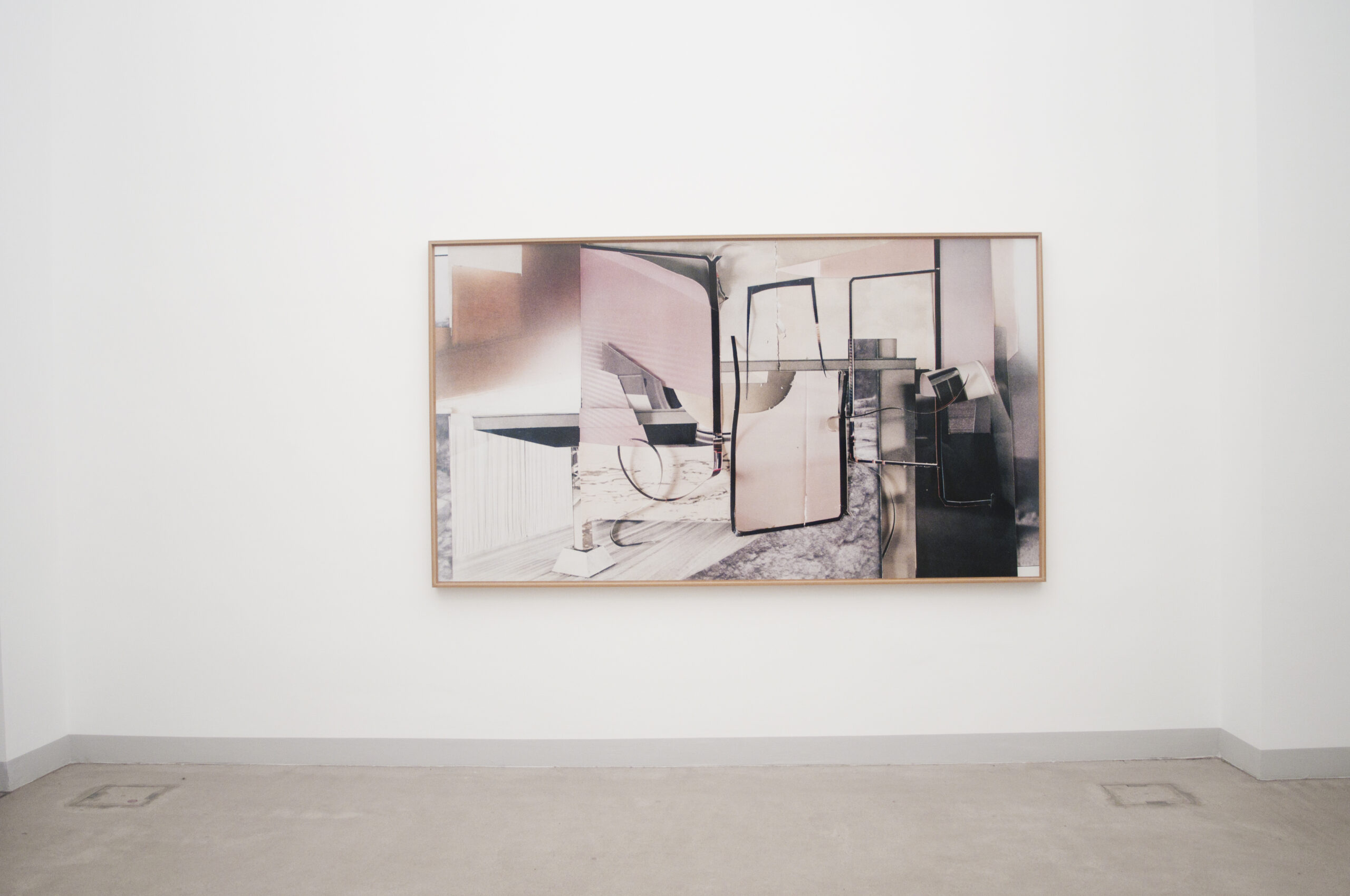BEST OF…
Within the scope of EYES ON
»Best of…« is like going on a trip. Photo by photo the viewer steps into strange rooms, landscapes or interiors. A time travel, possibly. Everything starts with a small, seemingly simple photograph. Upon which one sees an arch, a bottle, maybe full of water, some constructivist elements, spread out. Despite the abstract impression, the picture is able to show a real space. Anita Witek has held true to her work principle of the photographic construct. In accordance with the picture, collages or improved mounts from found picture material are mounted and then these model photographs are photographed again. In the series of work shown here she has found two sources from her childhood in the 70’s of the last century in western Europe. The magazine “Schöner Wohnen” and the volume by David Hamilton which is where the title comes from and both in their way coined the collective consciousness of the time. These fictive worlds of pictures only deliver the model. While the furnishing dream, which brings that homey feeling and modernity together in a compact mass, the constructive frame abides, the aging photographers erotic fantasies of the young girls remain invisible. Anita Witek uses only the space, the background of the pictures; she cuts the figures, the actual picture-subject of the foreground out. In this way she filters the essence of the material, that which builds the norm and the not so secretive pictorial archive mix, diffuse impression instead of memory, a foil for the question of one’s own form.
The first room (space) is put together with a few elements. The artist lays out further pieces, paper pieces and neutral forms without meaning over these structures. A process is set in motion and the simple picture has opened the field upon which two works answer. The pictures, hung closely next to one another, are the same. Like look and find pictures, in which you are prompted to look for mistakes, they uncover the futile desire for the “real” work. Layers of viewed material settle, and there is a displacement. It is still not clear what is remembered, only the atmosphere is visible and some insistent details.
“The knots have a logical priority before the lines, they pose questions.” This comment by Claude Levi-Strauss can be found in the concept of the “woven” as topical/topological paradigm of Hubert Damisch’s paintings. Layer by layer is created through interweaving, the deep structure of a surface out of tension and discontinuity. That type of texture created through condensation and permeability is heightened by Anita Witek in the great Tableau of the series to a puzzle of pictures or picture puzzle. Spaces are opened and at the same time, through the frame, reduced; the floor becomes the ceiling, stairs lead into nothingness. Paper shavings, laid over significant elements of the picture, work like brackets, pure “paper parts” form a new meaning, a bag from which something is pressed out suggests further surfaces. In addition to that left and right, top and bottom cannot be clearly defined; the picture could easily be hung the other way round and yet it appears real in its manifest size. In actuality the size of this photograph is in stark contrast to the marginality of what is depicted. Here the breakup of the real is carried out with the tools of reality, a surrealist approach. Equal to a picture in a dream something comes together, that seems to have a clear meaning and yet the message remains completely unclear.
As a counterpoint the artists puts down two versions of the same scene. They seem as though they have come forth from the signature of the great picture puzzle. Hanging over one another the photographs act as stage set rooms, peep boxes in which various scenes from one piece are performed. For it is always the same piece. Irritating is especially the missing protagonists, hollow rooms point out what is absent. The repeated branch poses the question of the “true” memory. Or could it be referring to a leap in time? The last work in the series annuls even this final certitude. Like a circle, the arrangement of the photographs leads back to the beginning. The last picture is connected to the first. The circular is also the optical central attraction of the work. A bow form, filled with water, a sort of whirlwind pulls the viewer into its spell. Water and Heaven remain the superficial game players and yet time becomes a visible dimension. In the series “best of” Anita Witek shows herself cyclical in the structure of repetition.
Daniela Hölzl
